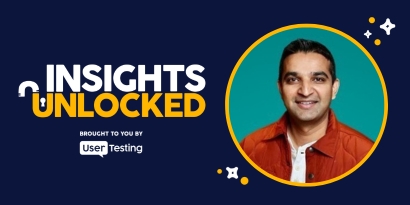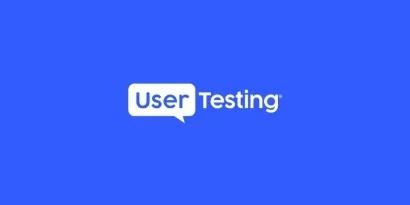
Episode 194 | October 27, 2025
Finding the content-market fit your customers care about with Ross Simmonds
Discover how to find content-market fit, scale with smart distribution, and use AI to create faster, better content with Ross Simmonds.
Why finding your content-market fit is the most important thing you're not doing
If your content isn’t landing, it’s not (just) because the algorithm hates you. It’s probably because your audience doesn’t love what you’re sharing.
That might sting a little, but it’s a truth content marketers need to hear. The good news? There’s a fix. And it starts with getting laser-focused on your content-market fit.
In a recent episode of Insights Unlocked, host Nathan Isaacs sat down with Ross Simmonds, CEO of Foundation, to unpack how marketers can discover what content truly resonates, scale it efficiently through smart content distribution, and leverage AI to stay ahead of the curve. Ross didn’t hold back—he shared frameworks, tactics, and a healthy dose of tough love.
Let’s break it all down.
What is content-market fit, and why it matters more than ever
You’ve heard of product-market fit. Now apply that same thinking to content.
“Content needs to have a fit with the audience just like products do,” Ross said. “It's about finding the stories your audience actually wants, not just what you think they want.”
At its core, content-market fit is the alignment between what you create and what your target audience is hungry for. It’s not a one-time achievement; it’s an ongoing process of discovery, validation, and iteration. And without it, even the most beautiful blog post or well-produced video will struggle to deliver meaningful engagement.
Stop guessing and start listening to signals
Marketers often fall into the trap of assuming they know what will work (especially when directed by the senior stakeholders who have “been there, done that”). But Ross says actual signals are everywhere, if you know where to look.
He recommends tapping into platforms like:
- Reddit: Look at upvotes and top posts in relevant subreddits. “If people are upvoting it, they’re engaging with it. That’s a clear sign of interest,” he said.
- LinkedIn and X (formerly Twitter): Measure which content earns the most likes, retweets, and shares.
- YouTube and TikTok: Watch for view counts, watch time, and shares to see what’s really resonating.
- Internal analytics: Use tools like Google Analytics, BuzzSumo, and SparkToro to dig into performance trends.
Ross emphasized the power of shares as a signal: “When someone shares a piece of content, they’re saying, ‘This aligns with who I am or helps someone I care about.’ That’s content-market fit in action.”
Be the meerkat: why you need to slow down to speed up
Speed is seductive in content marketing. We’re told to move fast, publish often, and keep the content pipeline full. But Ross introduces a smarter approach, using an unexpected metaphor: the meerkat.
“The meerkat hustles underground, but it pops its head up to make sure it’s still going in the right direction,” he explained. “That’s what marketers need to do. Stick your head up, check your signals, then get back to producing.”
This mindset shift—slowing down to evaluate before speeding up again—helps teams avoid wasting resources on content that doesn’t deliver. Ross advises building in quarterly content reviews to examine:
- Which topics or formats are performing best
- Where distribution efforts are strongest
- What your audience is responding to and what they’re not
These insights help refine your strategy, double down on what works, and stop producing content that’s just noise.
ON-DEMAND WEBINAR
Tactical (and practical) tips to get fast feedback for better marketing
How one tweet turned into a content empire
A great example of content-market fit in action? Ross’s own experience with a four-word tweet.
“Create once, distribute forever,” he tweeted one day while walking through a park with his kids.
The tweet blew up. Likes, retweets, quote tweets—it had everything. “I thought I was getting canceled,” he joked. But the engagement told him something deeper: he’d struck a nerve.
He turned that tweet into blog posts, LinkedIn content, a distribution checklist, and eventually, a book. Now, he’s widely known as the “content distribution guy,” all because he paid attention to a signal and built on it.
Marketers can apply the same idea. Nathan calls this process “making baby unicorns,” a phrase he credits to Larry Kim. If something resonates, don’t just move on, replicate and evolve it across formats and channels.
Don’t wait for permission, bring data to the table
Many marketers know what’s working, but struggle to get buy-in from leadership to shift strategy. Ross had some clear advice: use data to earn influence.
“Be your own best promoter,” he said. “Show your wins. Share what’s working. Bring the receipts.”
He recommends creating simple, presentation-style quarterly business reviews that cover:
- What content worked and why
- How those results align with business goals
- What you plan to do differently based on insights
Even if you’re not in charge of analytics, Nathan and Ross encourage marketers to partner with those who are—or get access themselves. “No one’s going to say no to you wanting to know if you’re doing your job well,” Nathan said.
Curiosity beats complacency
Ross credits much of his success to one underrated trait: curiosity.
“I call myself Sherlock Holmes Boy,” he said. “I go down rabbit holes, trying to understand what people care about.”
That curiosity leads him to dig into subreddits, obscure Facebook groups, and underutilized channels—places most marketers ignore. And that’s often where the gold is.
For example, Ross shared a story about working with a client in the IT space. By digging into the r/MSP subreddit, they found a four-year-old post that had gone viral. They recreated the same resource, updated it, and reposted it—with huge success.
In another case, a client had a landing page going viral every year in the r/todayilearned subreddit—and didn’t even know. By doubling down on that insight and designing a full campaign around it, they saw record-breaking traffic.
The takeaway? Stop relying on surface-level research. Dig deeper. Get curious.
Use AI to do more of what works—faster
If content-market fit is the strategy, AI is the execution engine.
Ross is a strong advocate for marketers augmenting their workflows with AI tools to increase efficiency and creative output. “If you can do things two times faster than everyone else, you know who’s never first on the chopping block? The most efficient person on the team,” he said.
He suggests using AI to:
- Brainstorm ideas
- Analyze transcripts and interviews for insights
- Draft and repurpose content
- Review past performance
- Coach yourself on calls or presentations
“You no longer need to pay thousands for a coach,” Ross noted. “You can upload your sales call to an AI and ask, ‘What could I have done better?’”
His team even built Distribution.ai, a tool that automates repurposing blog posts, videos, and more into content tailored for various platforms.
But Ross is quick to caution: AI doesn’t replace curiosity—it enhances it. The real magic happens when human insight and machine efficiency work hand in hand.
Make room for experiments
The marketing landscape is always shifting, and the best way to stay relevant is to keep experimenting—intentionally.
Ross urged listeners to balance proven, revenue-driving “cash cows” with a few wild cards. “Most teams never experiment,” he said. “And that’s why they miss the next big thing.”
Try this:
- Allocate 10%–20% of your budget or time to testing new channels, formats, or ideas
- Document your assumptions and learnings
- Treat even small signals as potential paths worth exploring
It’s how Ross got ahead of trends like LinkedIn publishing and Reddit content strategies years before they became common practice.
As he put it: “If you can find something before everybody else does, you’ve got a competitive advantage. And by the time they catch up, you’re already working on the next thing.”
Episode links:
- Ross Simmonds on LinkedIn
- Foundation
- Distribution.ai
- Nathan Isaacs on LinkedIn
- Create Once, Distribute Forever by Ross Simmonds
- Framed by James Ponti (children’s book featuring “the theory of all small things”)
- Stop guessing, start knowing : A Blueprint for Content Testing Maturity: This on-demand webinar aligns with the idea of validating messaging before scaling.
- Unlock higher conversions: understanding what users really want: This on-demand webinar focuses on using feedback to refine digital experiences and reduce guesswork.
- Uplevel your digital marketing with creative and prototype testing: This podcast episode discusses testing, content efficacy, and understanding user signals.
- Resource collections page
GUIDE









